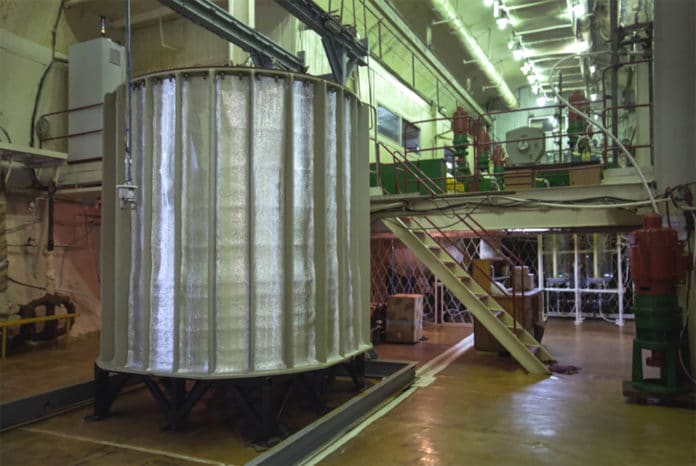The Baksan Experiment on Sterile Transitions (BEST) probes the gallium anomaly and possible connections to oscillations between active and sterile neutrinos. The latest results from BEST confirm an anomaly seen in previous experiments. This could point to an as-yet-unconfirmed new elementary particle, the sterile neutrino, or indicate the need for a new interpretation of an aspect of standard model physics, such as the neutrino cross-section.
Using 26 irradiated disks of chromium 51, a synthetic radioisotope of chromium, and the 3.4 megacurie source of electron neutrinos, BEST irradiated an inner and outer tank of gallium, a soft, silvery metal also used in previous experiments, though previously in a one-tank set-up. The isotope germanium 71 is created through the reaction of electron neutrinos from chromium 51 and gallium.
Based on theoretical modeling, the measured rate of germanium 71 production was 20–24% lower than expected. This disparity corresponds to a previous experiment’s anomaly.
BEST is based on the Soviet-American Gallium Experiment (SAGE), a solar neutrino experiment to which Los Alamos National Laboratory contributed significantly beginning in the late 1980s. Gallium and high-intensity neutrino sources were also utilized in the experiment. The results of that and other investigations revealed a deficiency of electron neutrinos, a difference between expected and observed results known as the “gallium anomaly.” The deficiency could be interpreted as evidence for oscillations between the electron neutrino and sterile neutrino states.
The same anomaly recurred in the BEST experiment. The possible explanations again include oscillation into a sterile neutrino. The hypothetical particle may constitute an essential part of dark matter, a prospective form of matter thought to make up the vast majority of the physical universe. That interpretation may need further testing, though, because the measurement for each tank was roughly the same, though lower than expected.
Other possibilities for the anomaly include a misinterpretation of the theoretical inputs to the experiment or that the physics itself has to be reworked. According to Elliott, the cross-section of the electron neutrino has never been measured at these energies. The electron density at the atomic nucleus, for example, is a theoretical input to calculating the cross-section that is difficult to establish.
Scientists reviewed the experiment’s methodology to ensure no errors were made in aspects of the research, such as radiation source placement or counting system operations. Future iterations of the investigation, if carried out, may include a different radiation source with higher energy, longer half-life, and sensitivity to shorter oscillation wavelengths.
Journal References:
- V. V. Barinov et al., Results from the Baksan Experiment on Sterile Transitions (BEST), Physical Review Letters (2022). DOI: 10.1103/PhysRevLett.128.232501
- V. V. Barinov et al., Search for electron-neutrino transitions to sterile states in the BEST experiment, Physical Review C (2022). DOI: 10.1103/PhysRevC.105.065502
